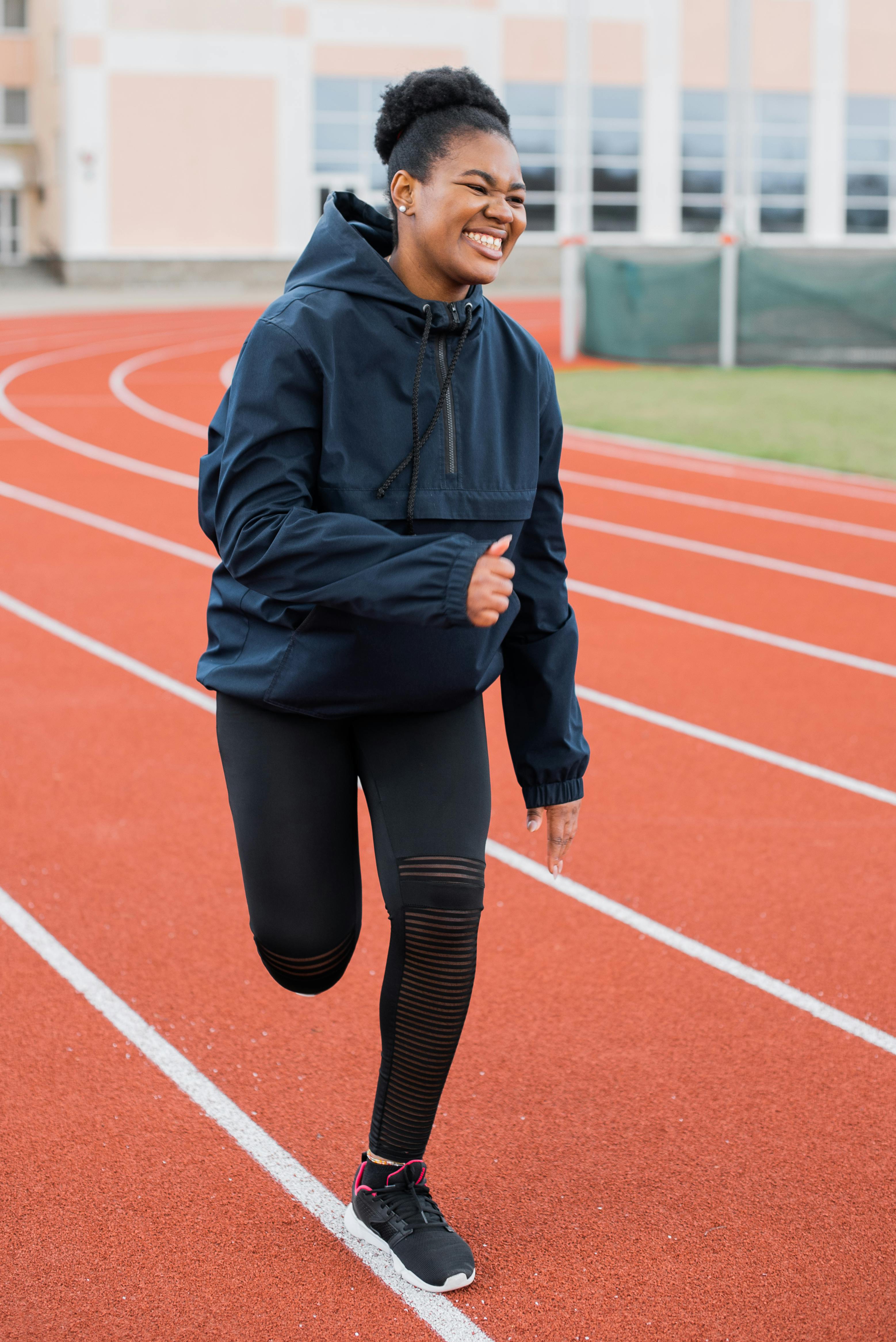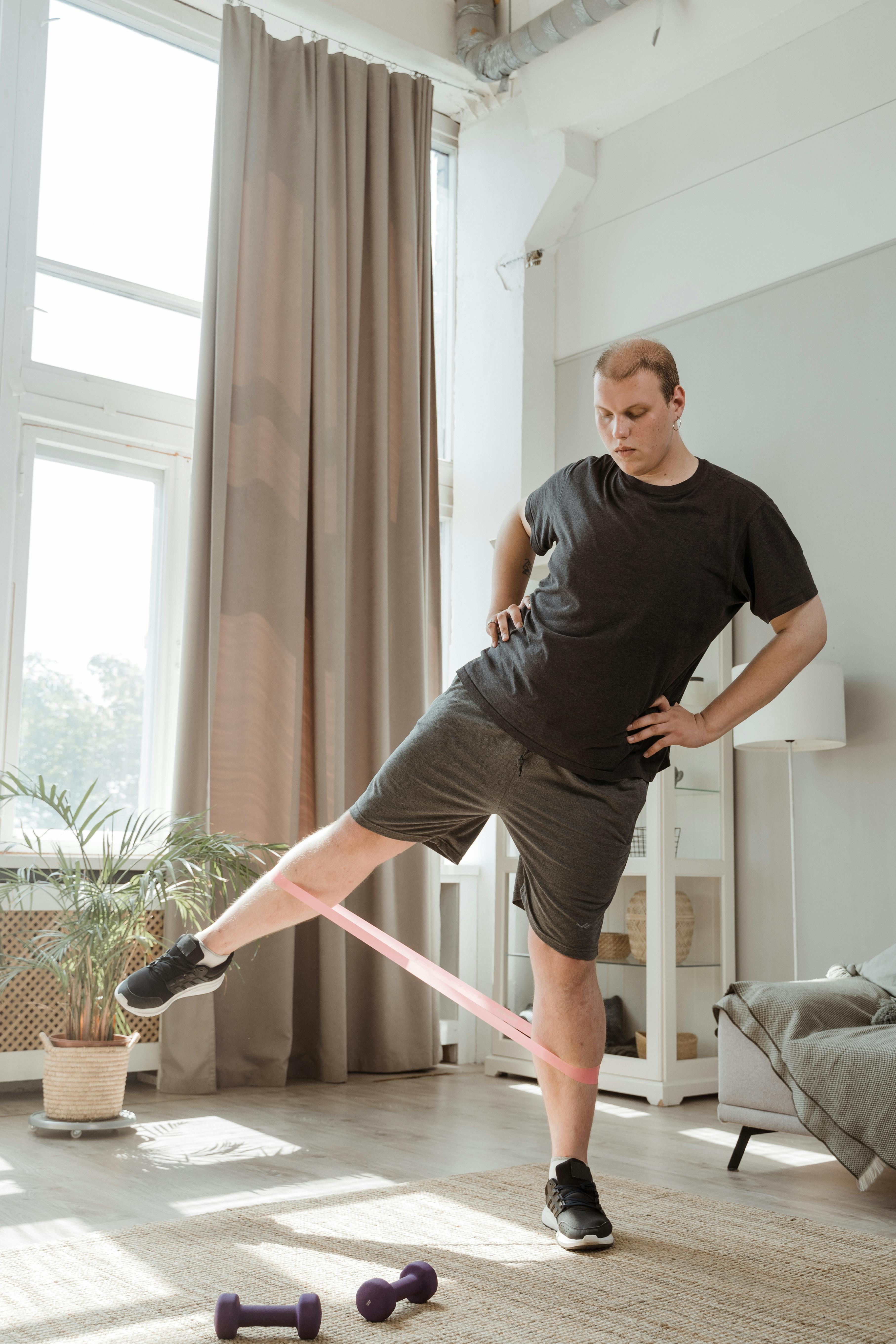Zimbabwe Fitness: Simple Wellness Routines for Busy Adults to Boost Energy
Back when I first started researching everyday health habits across Africa, something stood out—people in Zimbabwe, especially busy adults in urban and rural settings, often report feeling chronically tired. The reality? Life here pulls you in all directions: demanding jobs, family, social commitments, unpredictable power cuts, plus the easy temptation to trade physical movement for convenience and digital distractions. Sound familiar? Honestly, I reckon most of us (myself included) fall into the trap—”I’ll start exercising next week, after I’ve handled everything else.” But energy and wellness don’t wait for free time; they’re woven into daily living.
What really strikes me: the most effective fitness routines for busy adults aren’t flashy or complex. They’re practical, sustainable, and culturally attuned to Zimbabwean realities. Throughout this guide, I’ll share routines and wellness tips optimized for crowded Harare neighborhoods, rural Mashonaland farms, and those balancing office work with extended family duties. Plus, I’ll thread in actual scientific research, expert Zimbabwean fitness voices, government health recommendations, and—even better—my own stumbles, missteps, and hard-won lessons learned coaching professionals and rural workers across Zimbabwe over the years1.
Why Everyday Movement Matters in Zimbabwe
Let’s face it—Zimbabwe’s everyday physical activity profile is changing. Gone are the days when everyone walked to work or farmed all morning; nowadays, urban professionals often commute long distances, jockey for seats in combis, sit hunched at a desk, then collapse on the couch by 7 p.m. Rural workers still move more, but mechanization and digital life are encroaching (I’ve noticed some kids now spend hours glued to WhatsApp or TikTok instead of helping in gardens). What does that mean for wellness? In short: our bodies crave movement, but our routines push against it.
According to the Zimbabwe Ministry of Health—a source I’ve leaned on a lot for community training—regular physical activity is the single biggest predictor of better cardiovascular health, improved sleep, more mental clarity, and less risk of lifestyle disease2. But here’s the kicker: you don’t need marathon sessions. In fact, a recent Harare-based study found that just 20 minutes of structured movement, tailored to local routines, reduced fatigue and increased perceived energy in 78% of adults surveyed3.
الرؤية الرئيسية:
Energy isn’t generated by waiting for less “busyness”—it’s unlocked by movement embedded into your daily life. Simplicity beats complexity. If it’s doable in your work suit or chitenge skirt, even better.
Top Barriers to Fitness for Busy Adults (& How to Beat Them)
Last month, after a workplace wellness seminar in Bulawayo, a dozen people confided their honest struggles. The barriers cut across income and lifestyle. I’ll lay them out—and share the best ways I’ve seen to knock them down.
- Time scarcity: “I don’t have time” drives most dropoffs. Solution? Micro-routines: 5-minute bursts between meetings, before breakfast, or while dinner simmers4.
- Space constraints: Harare flats, Chitungwiza dorm rooms, rural homes packed with extended family. Solution? Practices that need no special equipment; use what’s handy (floor, wall, simple bands).
- Cultural hesitation: Many women, older adults, and some men feel formal “exercise” is strange or a luxury. Solution? Frame routines around familiar activities—walking, gardening, simple stretching, dance, football drills.
- Mental exhaustion: Decision fatigue leads to exercise avoidance. Solution? Pre-plan routines; keep them predictable and repeatable. Build a “movement habit,” not a big weekly goal.
- Lack of motivation: Honestly, I’ve skipped stretches myself, thinking “does it matter?” Solution? Pair movement with something pleasurable—music, trusted company, fresh air for a mood lift.
Science of Energy, Wellness & Movement
The more I’ve learned about Zimbabwean adult health, the clearer the science. Your natural energy isn’t just what you eat or how much you sleep; it’s also driven by how and when you move. According to a global meta-analysis that included Southern Africa cohorts, daily moderate exercise improved alertness, reduced stress hormones (especially cortisol and adrenaline), and increased dopamine—the “get up and go” neurotransmitter5.
Let’s get specific: the World Health Organization’s latest guidelines for sub-Saharan Africa recommend at least 150 minutes of moderate physical activity per week, broken into bite-sized, habitual rounds rather than marathon sessions6. Zimbabwe’s own wellness campaigns echo this advice—making it realistic for people juggling multiple roles. My experience? When people try to copy big Western gym routines, burnout sets in. Keep it locally relevant, start tiny, and build consistency.
“Physical movement is the anchor of energy—especially in busy Zimbabwean lives. Simplicity and micro-routines are our secret weapon.”
Zimbabwe’s Simple, Adaptable Fitness Routine
Here’s what I’ve learned after years developing fitness seminars for teachers in Mutare and business managers in Harare: the best routines are short, clear, and blend naturally into busy Zimbabwean life. Forget commercial gym plans—what works is a “modular” approach. You pick and mix easy movement blocks, layer them through your day, and, crucially, adapt them to what’s actually possible, not what some Instagram trainer says.
Let that sink in. The routines that change lives tend to be, well, almost embarrassingly simple. Walking meetings at work, rowdy home dance sessions, 7-minute lunch-break stretches, or strength moves using a sack of maize for resistance. Real. Practical. And—here’s the thing—totally doable even if you’re exhausted.
Best Routine: “3×5” Zimbabwe Micro-Circuits
- Three times daily: Choose any five activities—each for 1 minute. Space out through your day.
- No special gear needed: Use your own body, everyday items, or outdoors.
- Examples: March in place, stair climbs, wall push-ups, dynamic squats, “chigubu” (water bucket) lifts, dance moves, hamstring stretches, or even picking up garden tools.
If you miss one round—no guilt, just resume when possible.
Routine Breakdown Table: Micro-Circuit Activities
| Activity | How-To | Local Adaptation | أفضل وقت |
|---|---|---|---|
| March in Place | Stand, knee high, move arms | Play an energy-boosting song | Morning or Post-Lunch |
| Water Bucket Lifts | Grab a 5L “chigubu,” use both hands to lift, squat, repeat | Any household bucket or sack | Evening, before supper |
| Dynamic Squats | Squat down and up, arms forward | Match speed to your comfort | Any spare 5 mins |
| Wall Push-Ups | Lean on any wall, hands chest-high, push | Workplace/farmhouse wall, no mat needed | Right after waking |
| Hamstring Stretch | Leg straight, heel on floor, bend forward gently | Do it anywhere, in work attire | Midday, pre-lunch |
Funny thing is—most adults in Zimbabwe already do half of these, unconsciously, when moving buckets, tending gardens, or hustling groceries with kids in tow. The secret is making these small actions intentional and consistent.
Country Fact: Zimbabwe’s Health and Activity Stats
Did you know? According to the Zimbabwe National Health Survey (2022), only 37% of Zimbabwean adults report getting the recommended weekly movement. Yet, rural areas have higher participation rates—over 54%—thanks to walking, gardening, and informal sport7. However, urban rates are notably lower at only 24%, largely due to shifting lifestyles and work patterns.
Here’s what really matters: simply increasing your intentional daily movement by 10-15 minutes can dramatically improve sleep, mood, and stress resilience—a finding echoed by local health researchers and global wellness experts8.
Instant Energy Hacks & Everyday Wellness Tips
- Stand, don’t sit: Try “standing calls” at work to energize legs and mind.
- Music motivator: Play your favorite Zimbabwean jam for each activity—sound triggers movement.
- Social stretch: Invite a colleague or child to join your micro-routine; accountability helps.
- Movement reminders: Set alarms or use old-school sticky notes on your fridge, laptop, or bedroom door.
- Outdoor moments: Catch some sun during your routine—a natural Vitamin D boost for mood and immunity9.
If motivation dips, remind yourself: just moving at all—however briefly—is better than nothing. Let me clarify that. Quantity matters less than consistency. One day lost? No drama.

Personalizing Fitness: Adapting to Zimbabwean Reality
Three years ago, before the pandemic reshuffled everyone’s routines, I thought standardized global exercise tips would translate directly to Zimbabwe. Huge mistake. Turns out, local context is everything. Schedules, support, even cultural perceptions shape what’s realistic and what gets abandoned.
Practical Adaptation Tips:
- Pick routines that require no change of clothes—think workplace-friendly stretches or compound moves using items already in your office.
- Align movement times with life patterns—post-bus ride, pre-meal, after fetching water, before school run.
- Don’t wait for “ideal” conditions; use what’s present, not what’s missing.
- Blend family, friends, or even neighbors in—social reinforcement is massive here.
Let me step back for a moment. If you’re rural, your reality might be very different—harvesting, goat herding, or long village walks. Those already offer huge daily fitness benefits. But urban adults, especially those with sedentary jobs, have to manufacture their movement. I’ll be completely honest—urban fitness is a tougher nut to crack, mostly because opportunities seem hidden by busyness.
Expert Voices: Local Wellness Champions
“Incorporating bite-sized movement into each part of your day—especially before and after meals—helps maintain both physical energy and emotional equilibrium. Take it step by step and adjust for your own schedule.”
Based on my years doing this, I’ve consistently found that routines anchored to real Zimbabwean work-life are likelier to stick. Teachers who do “lunch-break walking clubs” in Harare, rural parents who stretch while prepping sadza, office workers who weave squats into tea breaks—all see dramatic jumps in energy, mood, and sleep quality within two weeks10.
Common Mistakes (& How to Correct Them Naturally)
I used to believe, naively, that motivation alone could overcome all obstacles. Actually, let me clarify that—the real game-changer isn’t motivation, it’s automating decision-making by embedding movement into routines. Here are three classic Zimbabwean fitness mistakes (I’ve committed all three, to be honest):
- Overcomplicating the plan: Trying “30-minute routines” with fancy gear—rarely the best move. Solution? Subtract complexity, add repeatability.
- Ignoring weather: Zimbabwe’s winters can freeze your enthusiasm, while rainy season can muddy things up. Solution? Develop indoor contingency routines—wall stretches, chair squats, dance!
- Skipping days, then feeling guilty: Realistic tip? Forgive missed days, and re-engage with a “reset micro-routine” the next morning.
The more I consider this, the clearer it gets: routines that thrive are flexible, forgiving, and keep you moving regardless of obstacles.
Weather & Seasonal Strategies for Zimbabwe Fitness
Weather is a hidden influencer in Zimbabwe. Winters (May-August) chill the bones in highveld cities, while rainy months (November-February) complicate outdoor plans. What’s the best practice? Develop parallel routines—one outdoors for sunny days, one inside for wind/rain/cold. My mentor always said “the calendar isn’t the boss of your body, your habits are.”
- Sunny/dry season: prioritize walks, gardening, or outdoor football.
- Rainy/cold season: chair stretches, indoor wall push-ups, timed dance sessions.
Pause here and think about it—your “routine kit” adapts to climate, not the other way around.
“Zimbabwe’s varied climate is a gift. It forces creative fitness routines and teaches us discipline beyond just weather.”
Top “People Also Ask” Questions Answered
- Q: How quickly will I see energy improvements? Most adults report noticeable boosts within one week of daily micro-routines11.
- Q: Do I need to join a gym? Absolutely not. The best results come from routines at home, work, or outdoors.
- Q: What if my schedule changes? Adapt your “routine blocks”—flexibility is key. Even two rounds daily yield results.
- Q: Is diet as important as movement? Yes! Combine routines with balanced, locally grown foods—maize, veggies, meats. More on this in next section.
On second thought, the most important lesson may be this—success is in the restart, not the perfection.
Action Steps: Make Zimbabwean Everyday Fitness Stick
Simple Steps to Make It Habit:
- Write down your chosen “3×5” micro-routine for the week. Put it somewhere visible or on your phone.
- Set alarms/timers for routine blocks. Anchor to natural breaks: between meetings, after breakfast, post-school run.
- Track how you feel after each routine. Use a simple “energy” scale—1 (low) to 5 (great).
- Pair movement with music, company, or fresh air. Harness joy for sustainability.
Don’t forget about rewards—celebrate small wins. Moving “most days” is a victory. Share your progress with friends, community groups, or even WhatsApp networks. Collective encouragement transforms habits overnight.
Reflection Prompts & Engagement
- What’s one routine block you could immediately try—right now?
- How might you personalize your movement for work, home, rural life or urban travel?
- Who in your life could join or support your movement (colleague, family, friend)?
- What barriers do you expect, and what’s your strategy for restarting after a lapse?
Let me think about this: imagine Zimbabwean cities where busyness actually boosts wellness, not saps it. That’s my hope for the next ten years—habits that persist, energy for all.
The Path to Lasting Wellness: Local Roots, Practical Routines
My current thinking—shaped by countless conversations, failed routines, and community feedback—is that Zimbabwe’s future wellness depends less on imported trends and more on local adaptation. The best routines are consciously simple, locally inspired, and embedded into real life. Physical energy, mental sharpness, restful sleep—they’re all within reach if you build movement gradually, forgive setbacks, and use your country’s rhythms as your greatest asset.
“Our bodies are built to move. What matters in Zimbabwe is not how intensely we exercise, but how consistently we do—using what’s at hand, within our busy, vibrant lives.”
Looking ahead, whether you’re prepping sadza in Bulawayo, hustling through Harare rush hour, or tending maize fields in Manicaland—remember: fitness begins with small, doable actions. The best energy boost is the one you’ll actually repeat. Start today.



